The Ultimate Outdoor Adventure Guide to West Virginia
The zigzagging route to the top of the South Peak of Seneca Rocks—the high point on a 900-foot-tall ridge of Tuscarora quartzite shaped like fins on a dragon’s back—was the most challenging climb I have ever done. Vertical rock faces were interspersed by grassy traverses where we had to coil and half-carry our ropes, and I was building anchors and setting protection for the first time.
Though moderate in difficulty, the four-pitch route demanded a repertoire of skills. And we were way, way up in the air.
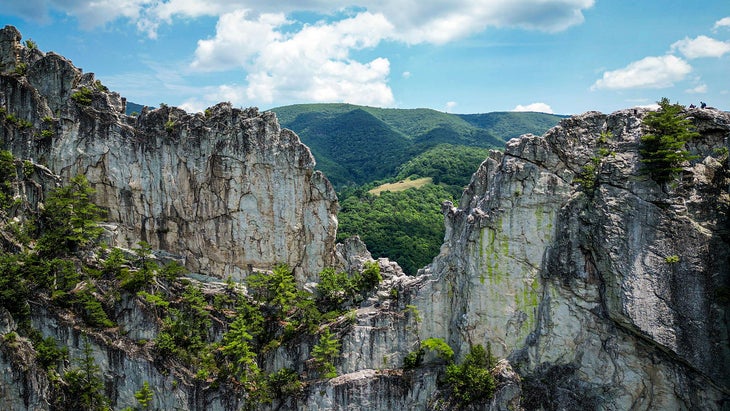
Guess where I was? West Virginia. I’ve long come to Mountain State to push myself, where you’ll find some of the best adventures east of the Mississippi, holding its own with better-known Eastern destinations such as Vermont and North Carolina for scenery, trails, and general badassery.
From Seneca Rocks’ crags to the big rapids of the Gauley River to the World Cup downhill-mountain-bike course at Snowshoe Mountain Resort, West Virginia is a wonderful and largely underappreciated outdoor destination. Over the last 20 years, I’ve climbed on sandstone cliffs, skied powder dumps, and gotten lost on my mountain bike more times here than I should admit.
Now I’m going to share with you all the ways you can enjoy it, too.
What to Know Before Visiting West Virginia

West Virginia is transitioning out of an extraction-based economy and into one based on outdoor adventure and recreation. Coal was the leading industry in the state for decades; before that, it was timber. Now, it’s tourism. According to the state’s 2023 annual report, tourism contributed more than $7 billion to local economies, employing more than 59,000 people.
What many people don’t realize is how much public land there is in West Virginia, which boasts 35 state parks, nine state forests, one national park, and the 920,000-acre Monongahela National Forest. The vast majority of that land is concentrated in the Allegheny Mountains, which define the eastern side of the state. The mountains aren’t especially high (Spruce Knob is the tallest, at 4,863 feet), but they are steep and wild, loaded with sandstone outcroppings and dense hardwood and spruce forests.
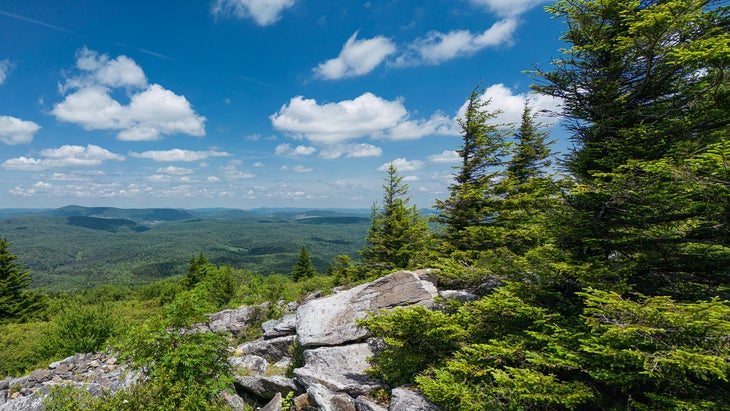
The state is within a day’s drive of many large regional cities (Washington, D.C. is about 177 miles east; Baltimore 210 miles east; and Cincinnati 365 miles west), so the most popular spots can be crowded on weekends. If you’re looking to raft in New River Gorge National Park during the summer or to ski at Snowshoe Mountain Resort in winter, book your trips a couple of months in advance. Otherwise you probably won’t find too many visitors, at least not compared to other outdoor destinations in the Southeast and mid-Atlantic.
The Best Adventures in West Virginia
Mountain Biking

I was first lured into West Virginia for its mountain biking, and the trails seem to get better every year. Seventy miles southeast of Morgantown, in the high-elevation Canaan Valley and ring of surrounding mountains, more than 100 miles of single track pass through an array of public lands, from state parks to wildlife refuges and national forest. Much of the trail system is connected, so you can create big, all-day rides around the central town of Davis.
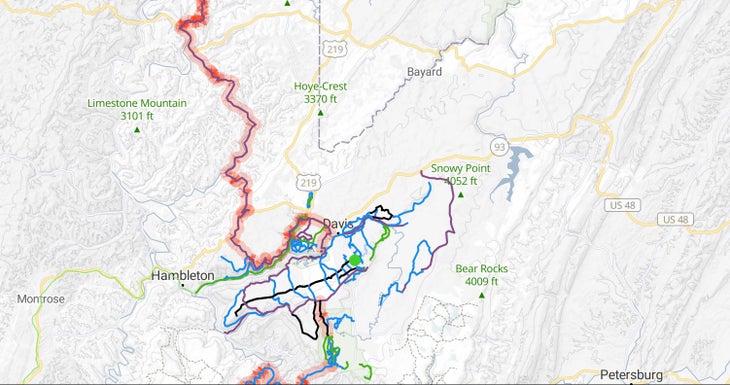
The eight-mile point-to-point Plantation Trail runs through the heart of the valley, with numerous connections for potential loops. It’s a technical mix of rocks and bogs—classic old-school West Virginia mountain biking. The mile-long Hellbender, east of downtown Davis, is fun and flowy for beginners and can become part of a longer ride when added to local favorites like Splash Down and Moon Rocks, with its unusually long rock garden. Blackwater Bikes in Davis has beta, bike rentals (from $50 a day), and shuttles (contact the shop for prices).
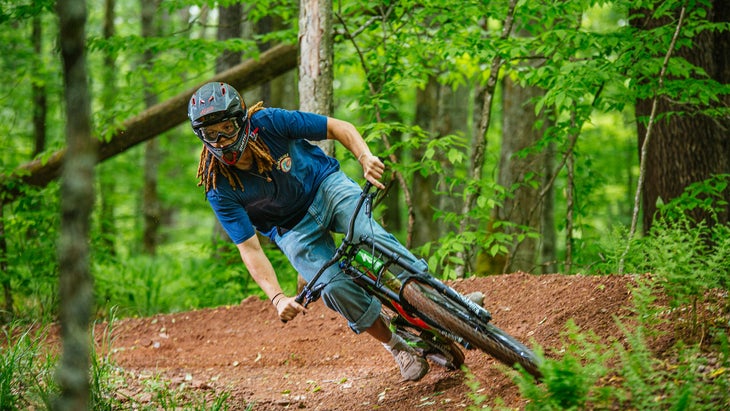
Snowshoe Mountain Resort, 90 miles south of the Canaan Valley, has an extensive bike park and one of the largest trail systems in the East, combining lift-served terrain and backcountry single track. The downhill park has hosted UCI World Cup events, so even top mountain bikers can find a challenge, but the 40-trail package also contains plenty of green-level berms and rollers (lift tickets from $45).
If you’re not looking for gnarly single track, consider the Greenbrier River Trail, an old railroad bed converted into an essentially flat, 78-mile linear park from Cass to Lewisburg, with a crushed-limestone path hugging the side of the stream. Thanks to 14 trailside campsites, you can tackle the route over several days. Greenbrier River Shuttles can help with logistics (from $85).
Hiking
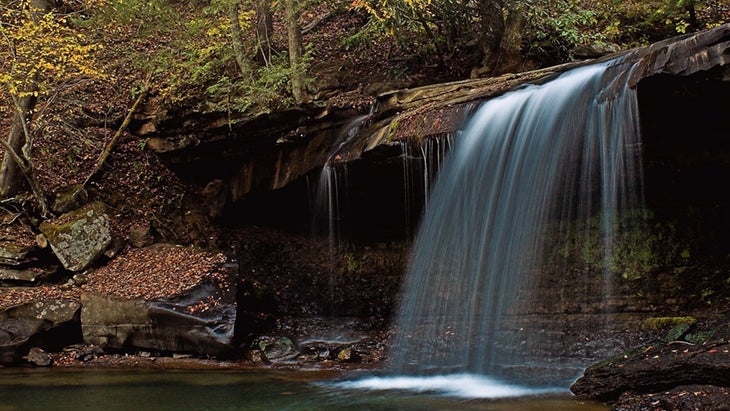
West Virginia recently introduced the Waterfall Trail, where you can chase 43 different cascades scattered around the state. Some of the waterfalls come at the end of long hikes, while others only require short jaunts from the trailhead. Download the mobile passport for details on different falls, and check in as you find each—20 visits gets you a T-shirt; see all the falls, and you receive a limited-edition letterpress print. Blackwater Falls, which drops 57 feet in a curtain over a sandstone cliff in Blackwater River Canyon, is one of the trail highlights.
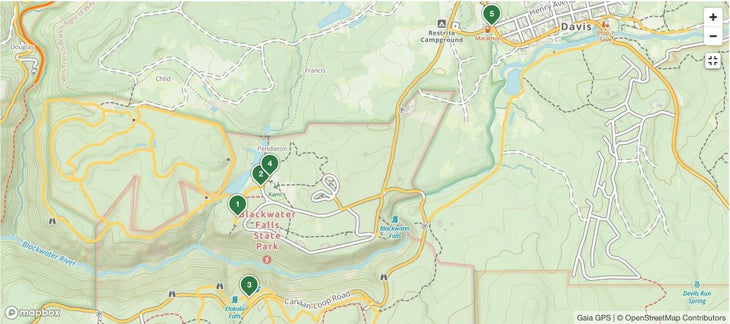
The 18,000-acre Dolly Sods Wilderness, 17 miles northeast of Canaan Valley, protects a high-elevation plateau with rocky outcroppings, remote creeks, and flora such as red spruce and heath barrens—plant life more typical of southern Canada than southern Appalachia. It’s a bucket-list romp for backpackers and day hikers. Red Creek is the classic Dolly Sods summer adventure, a 12.3-mile out-and-back full of sandstone boulders, swimming holes, and meadows that in August are loaded with blueberries.
The North Fork Mountain Trail, a 25-mile point-to-point that traces the craggy ridge of North Fork Mountain within the Spruce Knob-Seneca Rocks National Recreation Area, offers nearly continuous views of the pastoral valley below. I once hiked it during the winter and was mesmerized watching peregrine falcons circling just off the pinnacles. You don’t have to hike the whole trail to enjoy it, though. From the northern trailhead, hike the 5.2-mile out-and-back to Chimney Top, a large sandstone outcropping that juts out from the ridge with a view of North Fork Mountain’s silhouette.
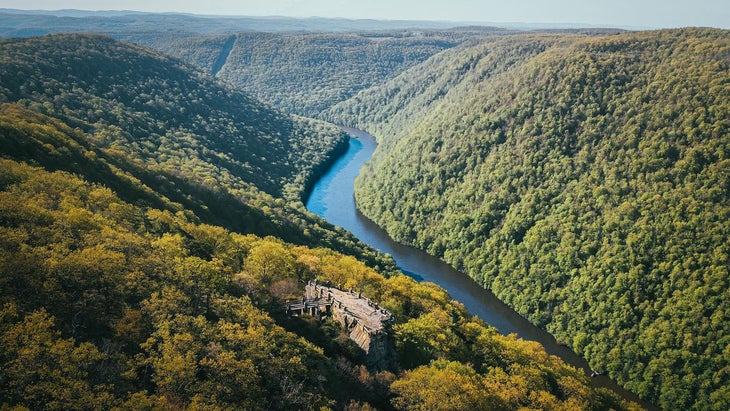
Coopers Rock State Forest, near Morgantown, has 50 miles of trails through boulder fields that offer the occasional view of the Cheat River Gorge below. The 1.4-mile Rock City Trail is an easy walk through rhododendron tunnels to a moss-covered rocky field. For the big river view, hike the 2.4-mile out-and-back Raven Rock Trail to Ravens Rock Overlook, where you can stare straight down into the heart of the gorge.
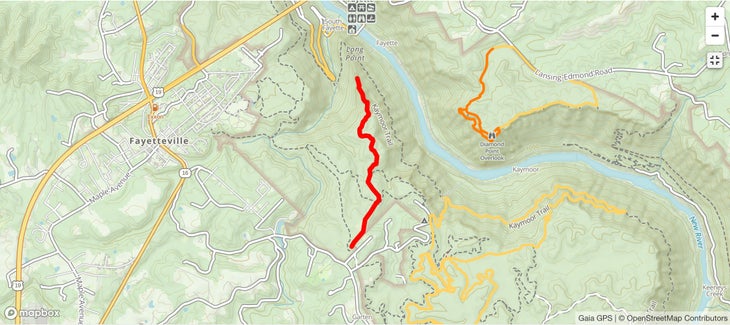
New River Gorge National Park is best known for its climbing and whitewater rafting, but don’t miss the hiking. Long Point Trail is a three-mile out-and-back through a hardwood forest to an overlook with the best view anywhere of the New River Gorge Bridge. The five-mile out-and-back Endless Wall Trail is a bit more involved, crossing a small creek (narrow enough to hop over) and then traversing the canyon rim for 2.5 miles. You’ll pop in and out of the woods, with views of the river 1,000 feet below from the cliff’s edge. You may see climbers working their way up the rock walls. For something a little shorter and still plenty great, an outcropping named Diamond Point has an incredible view of the gorge and makes for a good two-mile out-and-back from Fern Creek Trailhead.
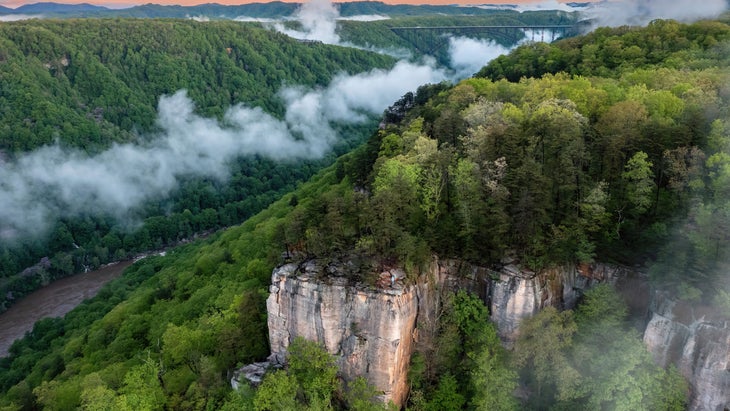
Skiing
Snowshoe Mountain Resort is the biggest such operation in the state, with 244 skiable acres, mostly accessed from a mountaintop village. The skiing is legit, thanks to the 1,500-foot vertical drop and consistent snow every winter. Shay’s Revenge and Cupp Run are twin black-diamond runs that drop off the western face of the mountain; expect steep pitches and lots of bumps.
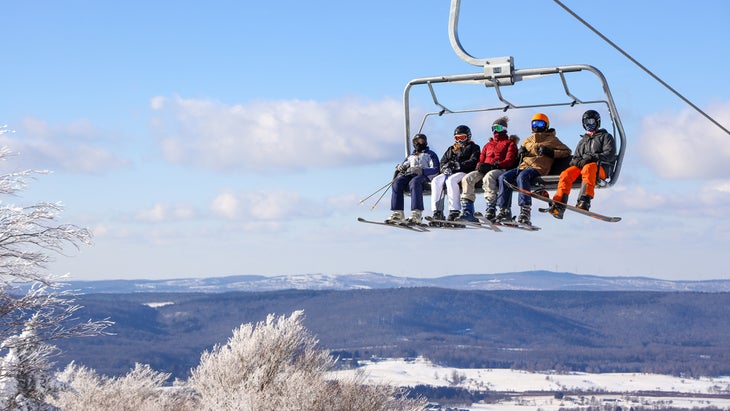
Canaan Valley is home to two downhill resorts (one also named Canaan Valley) and a cross-country ski center. Canaan gets most of its powder from lake-effect storms, and the consistent snow has encouraged a vibrant ski culture. Timberline Mountain is the bigger of the local lift-served options, with steep fall-line groomers and hidden stashes of glades. A six-person chair facilitates fast top-to-bottom laps, or stick to the mid-mountain quad for its glade runs. The après scene is the best in the state.

No trip to Canaan Valley is complete without a cross-country day at White Grass Ski Touring Center. More than 50 kilometers of groomed trails meander up and around Weiss Knob, West Virginia’s first ski hill (established 1959). There is a nice skate-skiing track, but cross-country skiing here is mainly about going up and down, finding tree stashes, and making the most of the 1,200 vertical feet of gain.
Rock Climbing
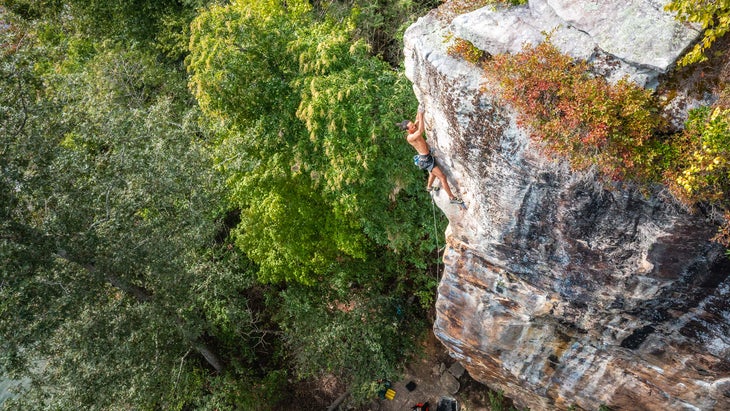
The New River Gorge is one of the top climbing destinations in the East, with thousands of established routes throughout the canyon. Its hard sandstone cliffs rise 40 to 150 feet, and you’ll find everything from beginner-friendly top-rope options to multi-pitch lines and sport test pieces. Head to Bridge Buttress for mellow top-rope routes like Easily Flakey, a 5.7 up a dihedral (corner), the perfect introduction to climbing in the area.
I’ve taken climbing courses and gone on guided climbs with New River Mountain Guides, and its staff always put me on good routes for my ability and goals.

Some 150 miles north is Seneca Rocks, loaded with multi-pitch routes that take on an adventurous flare with scrambling and hiking between roped sections. During World War II, the famous Tenth Mountain Division trained at Seneca Rocks for deployment in the mountains of Italy. Gunsight to South Peak (5.4) is a two-pitch classic that finishes on the very exposed fin of the South Peak with 360-degree views of the valley and greater Seneca Rocks-Spruce Knob National Recreation Area.
If you really want to learn the art of climbing, check out the three-day traditional climbing clinic with Seneca Rocks Mountain Guides. I took this course several years ago, and learned everything from tying the standard figure-eight knot to setting my own anchors.
Rafting

West Virginia has a trio of rivers that offer big-water rafting, with high-volume runs similar to what you’ll find in the western U.S. The New River is the most accessible, thanks to the bevy of raft guides operating out of Fayetteville and the family-friendly Class III–IV rapids. The eight-plus-mile Lower New has the most action, with countless wave trains, various Class III drops, and two Class IV+ rapids.
The Cheat River has a thrilling 13-mile run through a deep canyon that drops 50 feet per mile, juicing the experience with more than 40 Class III–V rapids. The river is not dammed, so the run is dependent on precipitation and usually only viable in the spring.
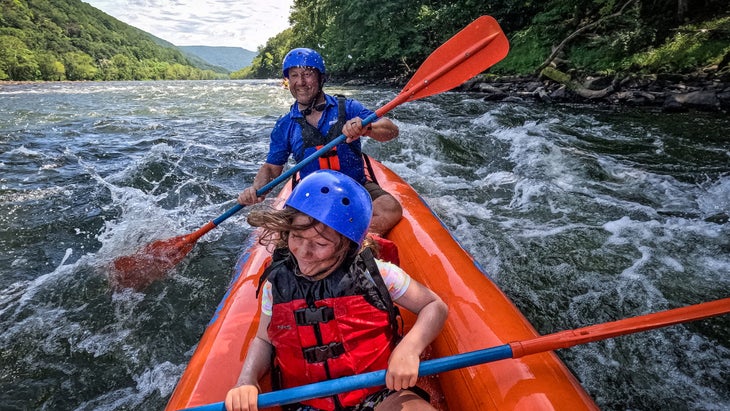
The ultimate whitewater adventure is running the Gauley, a dam-controlled river in central West Virginia, during Gauley Season. Over the course of six weekends every autumn—this year starting September 6—controlled releases create a choice 24-mile stretch of whitewater that draws pro kayakers and recreational boaters alike.
The gathering grounds are in the Summersville Lake area, just north of the put-in, which maintains a festival-like atmosphere, and at nearby campgrounds. The 11-mile Upper Gauley is considered one of the most high-adrenaline commercial rafting trips in the country, with one rapid stretching for a continuous mile and five Class V’s, including a 14-foot waterfall. The 13-mile Lower Gauley also has its share of Class V water, but with calm stretches between the action, and most of its whitewater rolls along as relatively carefree wave trains.
Lake Activities
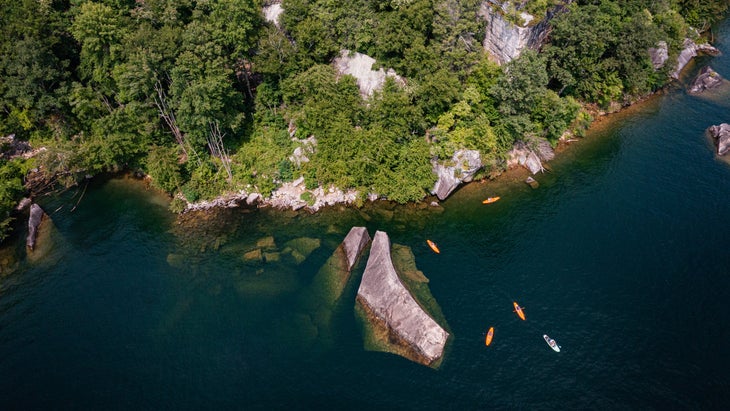
Summersville Lake, 20 miles north of Fayetteville, spans 2,700 acres and is the state’s largest body of water. It’s been dubbed Little Bahamas for its clear blue water. Sandstone cliffs encircle much of the lake, making it a particularly beautiful place to boat or fish for smallmouth bass. Around the area are various excellent cliffs for climbing.
Paddle the mile from the Salmon Run Boat Launch to Pirate’s Cove, an inlet hemmed in by overhanging sandstone cliffs, where a waterfall tumbles directly into the water. Lakeside Outfitters has paddleboard rentals and guided trips (from $65 for two hours). Or check out the new Summersville Lake State Park, which occupies 177 acres on the northern shore. Eventual infrastructure will include campsites, cabins, and a robust trail system for hiking and biking. Right now you can hike a 0.7-mile trail to the Pirate’s Cove area.
The Best Adventure Towns in West Virginia
Fayetteville
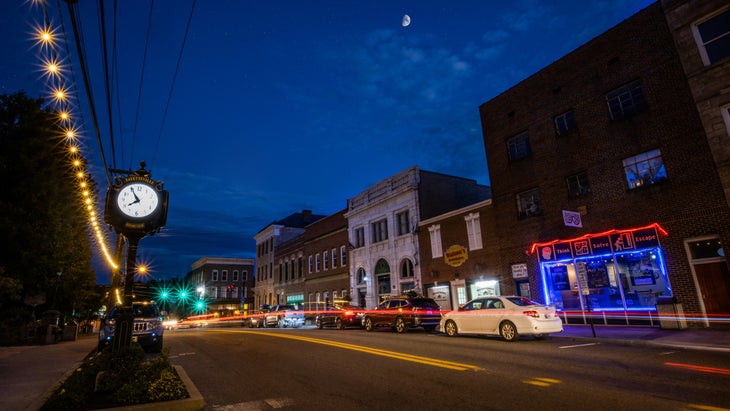
Located on the outskirts of the New River Gorge, the historic city of Fayetteville has attracted climbers and paddlers for decades. Now that the New has been designated a national park, the rest of the world has discovered the magnificence of this little town. The downtown is laid out in a square, with a picturesque courthouse surrounded by shops and restaurants. Water Stone Outdoors has the gear and beta you need to make the most of your rec time in the gorge. Grab breakfast or lunch to go at Cathedral Café, located in a small former church. In the evening, you can find pizza, salad, and beer at the lively Pies and Pints.

Davis
Davis, in Canaan Valley, might be the perfect small mountain town. It’s only a few blocks wide, but full of good food, and it has a bike shop and immediate access to mountain-biking and hiking trails. Blackwater Falls State Park is on the edge of town, and Canaan Valley State Park is just ten miles south. Both downhill skiing and cross-country skiing are also only ten miles away. Get the Gendarme burrito at Hellbender’s and pizza and beer at Sirriani’s Café.
Morgantown
Home to West Virginia University, Morgantown has a fun college-town vibe, but it’s also a great base camp for exploring Coopers Rock State Forest and the Cheat River Canyon. The wide, slow Monongahela River passes through town, with five miles of paved rail trails along its banks. Pathfinder is the go-to outdoor shop, with gear and accessories for all adventures, and Mountain State Brewing makes some of my favorite beers in West Virginia. Its Almost Heaven Amber goes down easy after a day on the trails.

Where to Stay in West Virginia
Snowshoe Mountain Resort has all sorts of on-and-off mountain lodging to fit almost any budget (management has even let me sleep in my trailer in the parking lot behind the affordable Snowshoe Mountain Inn). Corduroy Inn has the nicest digs, and rooms are across the street from the expert terrain of the ski area’s Western Territory (from $99).
To explore Davis and the Canaan Valley, book into the ten-room Billy Motel and Bar, which has a retro vibe and a happening evening cocktail hour (from $100).
Adventures on the Gorge, a complex just outside Fayetteville, has everything from inexpensive tent sites to luxury cabins. Most accommodations are scattered around a 350-acre campus complete with restaurants, lawn games, a swimming pool, and views of the New River Gorge (covered platform tent sites from $49).
And don’t overlook West Virginia’s entire state-parks system; a $200 million renovation project is wrapping up that has improved every single lodge and cabin. The Lodge at Blackwater Falls State Park is particularly enticing, with just 54 rooms and a back patio that stares straight down into the river gorge below (from $156).
Best Time to Visit West Virginia
Spring

Spring is the sleeper season. Temperatures can still be chilly in March and April, but the crowds are thin, so you can get good deals on lodging and guided trips to popular destinations like New River Gorge National Park. If you show up in early March, you could still enjoy lift skiing at Snowshoe, which typically has the latest closing date among resorts in the state. Hardwood leaves will bud in early April, and the forest typically reaches a full, lush canopy by the middle of the month. May is a great month to hit the state because the temperature is rising but school is still in session so families aren’t traveling yet. The leaves are fully back and, after the gray and leafless winter, everything is green again.
Summer

I think summer is the best time to visit West Virginia, but I’m a sucker for swimming holes, lakes, and whitewater rapids. You’ll be cooler in the mountains than on the flats, though even there it can get hot and muggy. New River Gorge National Park will be crowded in summer, but you could have most of the other destinations in this article to yourself.
Fall

Aside from some stands of evergreens scattered throughout its highest peaks, for the most part, the mountains of West Virginia are covered in hardwoods, which means autumn is spectacular. Look for the groves of maple trees, which locals tap for syrup. Fall is also the famous Gauley Season, when, for six consecutive weekends, water from Summersville Lake is released into the Gauley River, creating one of the country’s most beloved annual events for whitewater enthusiasts. Keep an eye out for Bridge Day, on October 19 this year, when thousands of people converge on Fayetteville to watch BASE jumpers leap from the New River Gorge Bridge, the third-highest bridge in the U.S. at 876 feet.
Winter
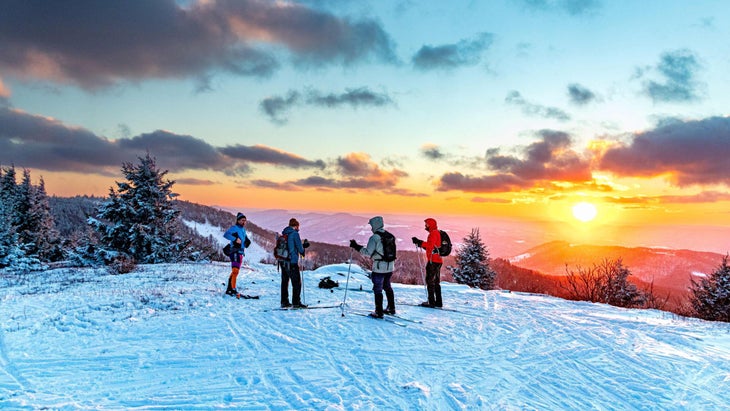
You might not expect a vibrant snow-sports scene in the southern Appalachians, but West Virginia isn’t called the Mountain State for nothing. Storms generated to the north on the Great Lakes deliver plenty of powder (annual snowfall at Snowshoe Mountain Resort averages over 150 inches a year), and five downhill resorts and one cross-country ski center soak it up. Those centers are located across a band of mountains in Pocahontas and Tucker Counties, along the eastern edge of the state.
The rest of West Virginia experiences pretty mild winters, without much snow at all. New River Gorge National Park has temperate winters with reduced crowds, making it an ideal time to bike and hike.
Graham Averill is Outside magazine’s national parks columnist. He considers moving to West Virginia permanently after every trip.

For more by this author, see:
The 10 Best National Parks in Canada
The Ultimate Guide to Driving the Blue Ridge Parkway
The 9 Most Fun Adventure Lodges in North America






:max_bytes(150000):strip_icc()/Taste-New-Zealand-by-Train-FT-BLOG0724-09-fb25843024f54b06a56b680edf379082.jpg?w=80&resize=80,80&ssl=1)
